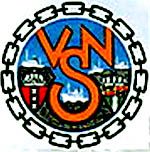V.N.S. -
Use Google Chrome for this Web Page to load perfectly!
Maritime Historian, Cruise‘n’Ship Reviewer, Author & Maritime Lecturer
Please
Note: All ssMaritime and other related maritime
sites are 100% non-commercial and privately owned, thus ssmaritime is NOT
associated with any shipping company or any other organisation! Although the
author has worked and been involved in the passenger shipping industry for well
over 60 years, but due to his old age and poor health, he was forced to retire.
Yet, he has completed well over 1,435 Classic Liners, Passenger-Cargo Liners as
well as humble converted C3 converted Migrant Liners, which has transported
countless thousands folk to the new world, as well on vacations’. I trust
the features online will continue to provide Classic Liner and Ship enthusiasts
both the information they are seeking, but more so provide a great deal of
pleasure and relive many happy memories!
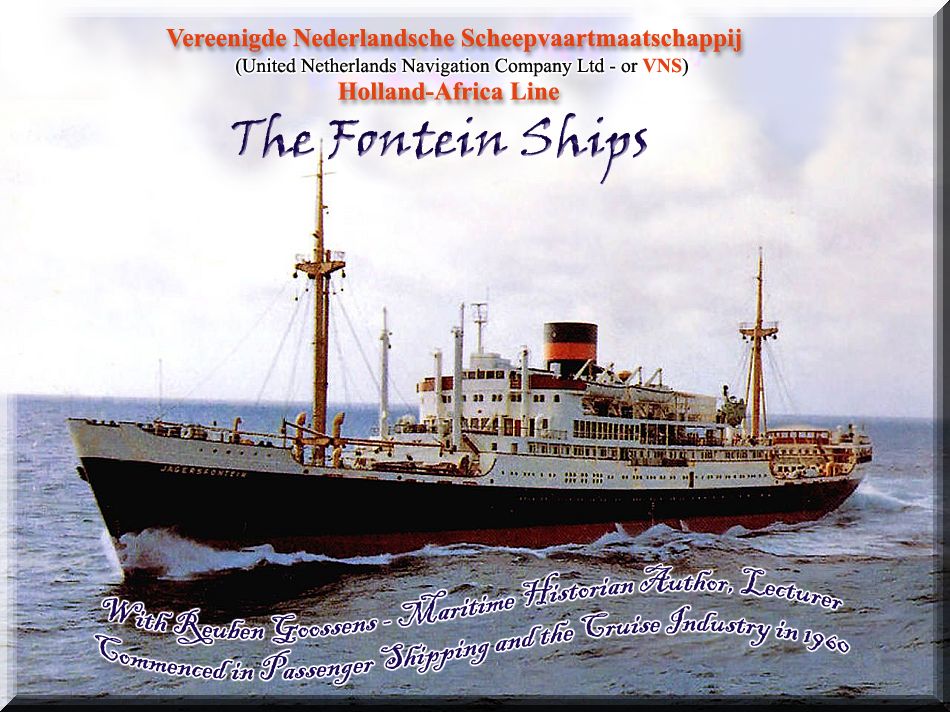
Also the M.S.
Randfontein (2) - in 1971 - renamed M.S. Nieuw
*******************************
Page One
This Page: M.S. Klipfontein (2), Oranjefontein & Jagersfontein (3)
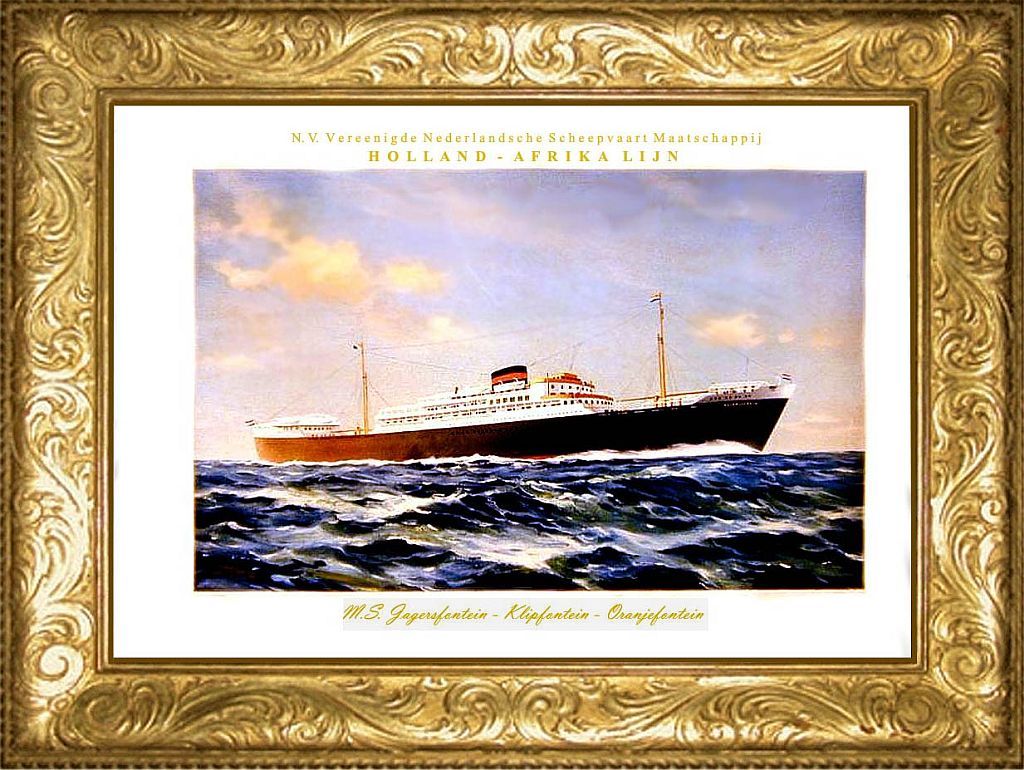
V.N.S. produced this promotional painting prior to the completion of the first of the trio, the Klipfontein in 1939
These prints were then given to Travel Agents, and I have had this one since 1962. The ship is rather overly
streamlined looking, far more that the actual ships were in real life, but that is typical promo, it still happens today!
Please Note: Most photographs and images are from the author’s private collection, obtained when working with Royal Dutch Mails or over the past 58 years
Which included
V.N.S., other photographs will be as noted
The Company
Background: At the conclusion of WWI (1918) for
Dutch Shipping Companies it was a time of optimism, mostly because of the
demise of German Shipping Companies from the seas and the demand for shipping
tonnage was now in great need. Some directors of Dutch Shipping Companies made
a decision to commence a new company to fill the gap that was left by the
Germans especially by the “German East Africa Line.”
Thus on April 30, 1920 the “N.V. Vereenigde
Nederlandsche Scheepvaart Maatschappij - (V.N.S.) Den Haag, was founded by ten
major Dutch shipping companies with a capital of 200 million Dutch guilders.
VNS took over the and soon thereafter the new “Holland West Africa
Line” was founded in conjunction with the “Hollandsche Stoomboot
Maatschappij” (HSM) and “Koninklijke Hollandsche Lloyd” (KHL).
Due to the building of new ships being
extremely expensive after WWI, VNS with permission from
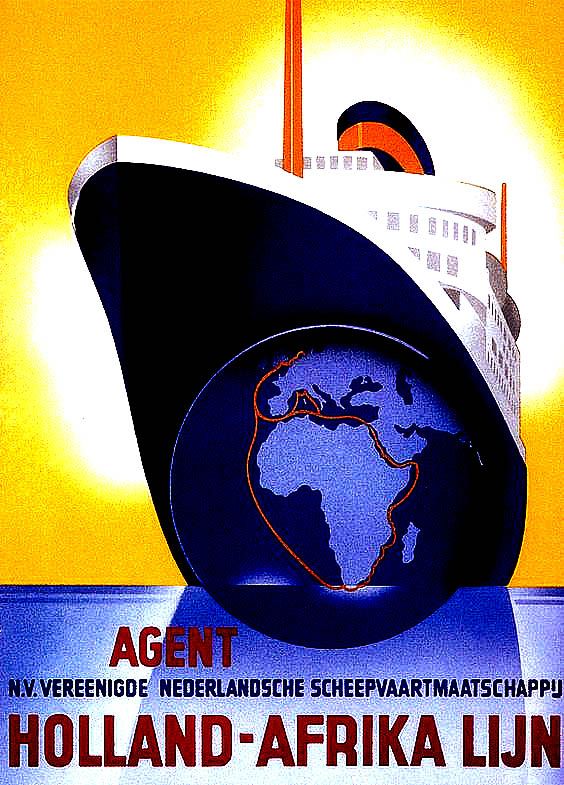
A typical V.N.S. poster placed in Travel Agencies
In 1932 the NZASM went in liquidation and the VNS took over their fleet and goodwill. Three new ships were commenced in construction just prior WW2, but sadly, VNS lost eleven ships during the War. After the war a programme was commenced to build new ships replace their losses. In due course, the once very successful passenger service declined in the sixties due to the arrival to cheaper air fares, and the rapid change in cargo handling with containerisation taking over. On top of all that there were also political problems in some African countries. Due to this, in 1967 this caused the sale of the wonderful M.S. Oranjefontein and Jagersfontein, and replace them with fast all cargo ships due to the change towards containerisation being simply too costly for one company. Then VNS announced in 1969 a merger as the “Nederlandse Scheepvaart Unie” (NSU) and took over all of the Dutch lines within the group and soon they all cane under the one name “Nedlloyd,” then later “Koninklijke Nedlloyd Group,” “P&O Nedlloyd Container Line,” and today it remains the “Maersk Lines.”
This multi page feature will cover four of the very last major Passenger-Cargo liners to be built for the famed (VNS) which was also known later as “Holland Africa Line.” The first of these ships was a trio of identical 10.500-ton Fontein ships, which were launched in 1939 and 1940 accommodating up to 160 passengers, but each had a very different start to their existence. Whilst the company’s next and very last passenger liner of 13.700-ton was floated out of an indoor dock in 1958 accommodated 289 passengers.
Page One will
cover the “Klipfontein Trio” history, Page Two, covers a
families voyage on the M.S. Jagersfontein to
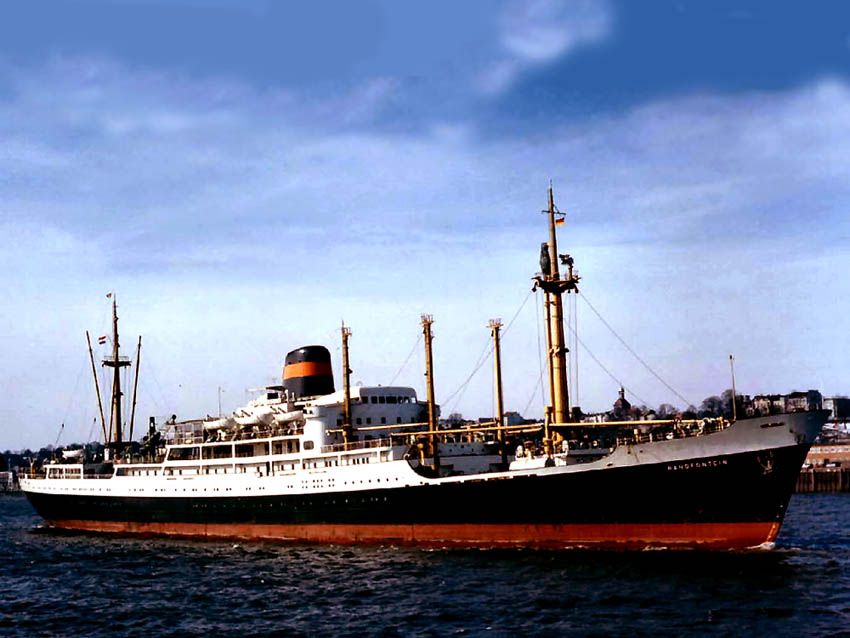
The modern and larger M.S. Randfontein
Enjoy this feature, Reuben Goossens.
First Klipfontein (2) 1922:
The Klipfontein (2) was built by the
“Rotterdamsche Droogdok Mij,”
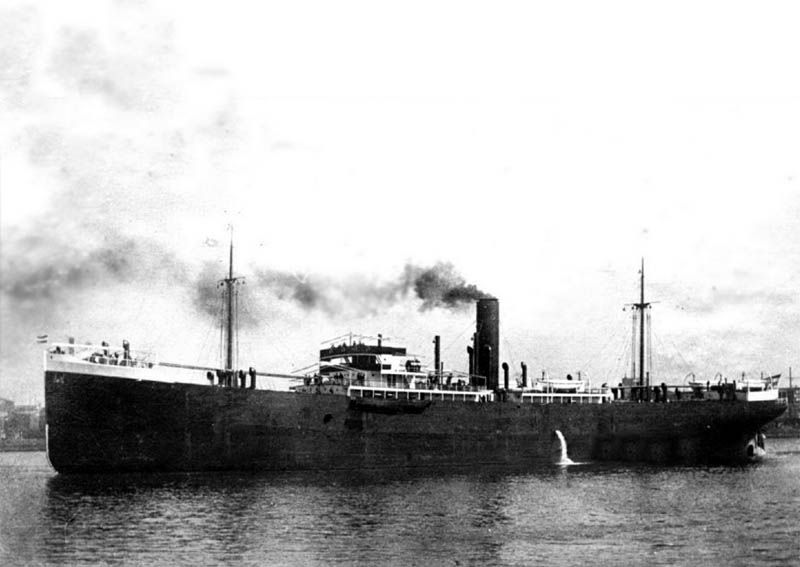
This is the very first, 1922 built SS Klipfontein
Although V.N.S., did
not have her for long, for in 1935 she was sold to an Italian company “Rizutto Fratolli”
The Three Fontein Sisters:
The Three Fontein sisters exuded an
understated luxury which endeared them to the Dutch, English, European as well
as the South African travelling public. In those days, many preferred to sail
on smaller passenger liners for many good reasons, mostly due to V.N.S. Company
had a long and a reputable reputation, and these fine ships offered comfortable
accommodations, a good range of intimate lounges and bars. In addition the
Fontein ships were famed for their superb personalised Dutch service and its
excellent cuisine. The company had used some of the top interior designers, and
therefore the Fontein interiors were likened to many of the larger passenger
liners, but what was missing was the crowd.
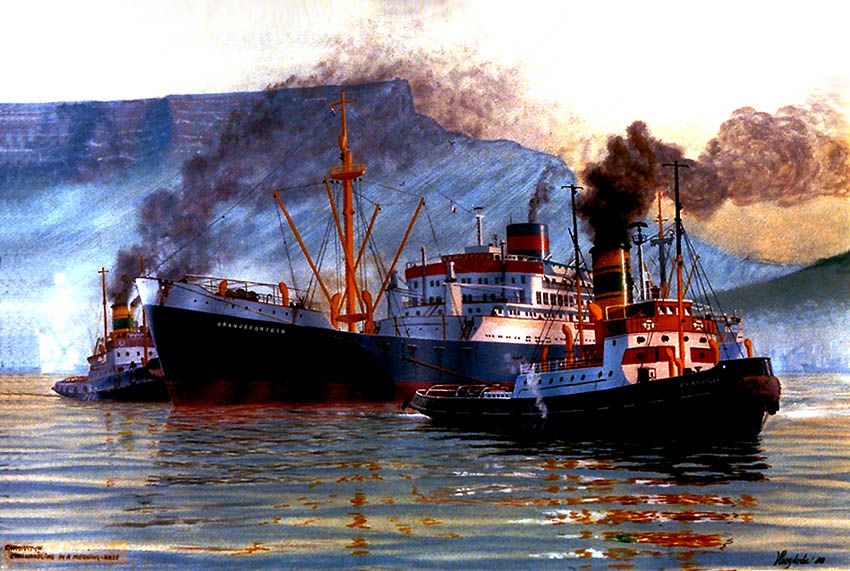
A beautiful painting of the second ship of the trio -
M.S. Oranjefontein seen at
Thank you Sandra van der Plas for sending it, but I have been unable to discover the painter’s details
Please see the Image/Photo details at the bottom of the page, as I believe in giving everyone full credit!
This trio of ships had five passenger decks,
accommodating 100 First Class and 60 Tourist (the Klipfontein 104 First –
42 Tourist). First Class was located forward of the superstructure, whilst
Tourist Class was located somewhat aft. All First Class lounges including the
swimming pool were located on Promenade deck, with Tourist facilities being on
lower decks aft. Cabins ranged from singles and twin bedded cabins in First
Class, some having an upper
As will be read below, the first three Fontein
ships featured had interesting beginnings, this being due to World War II.
*******************************
1. Klipfontein
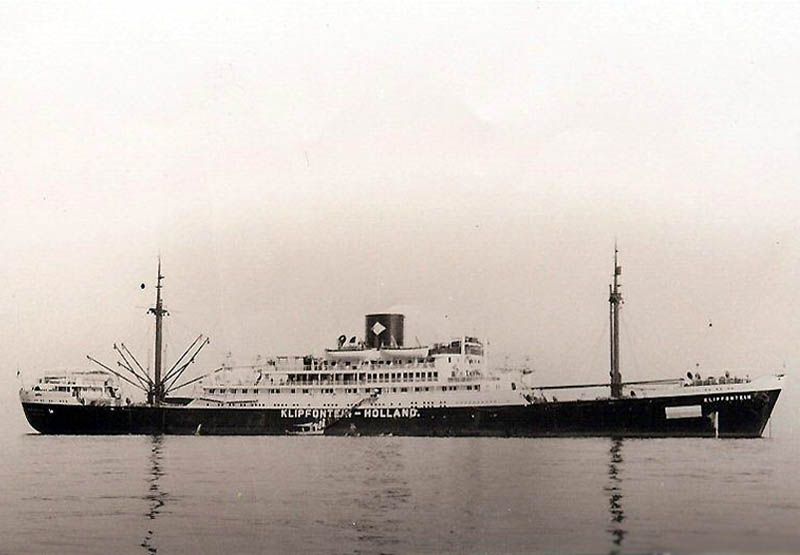
The M.S.
Klipfontein
M.S. Klipfontein
(2) was the first of a trio of ships to be built between 1939 and 1940.
These were a new class of combination passenger liners, offering new and high
standards of passenger comfort.
She was constructed by P. Smit Jr,

A week later, the Klipfontein departed on her
maiden voyage sailing from
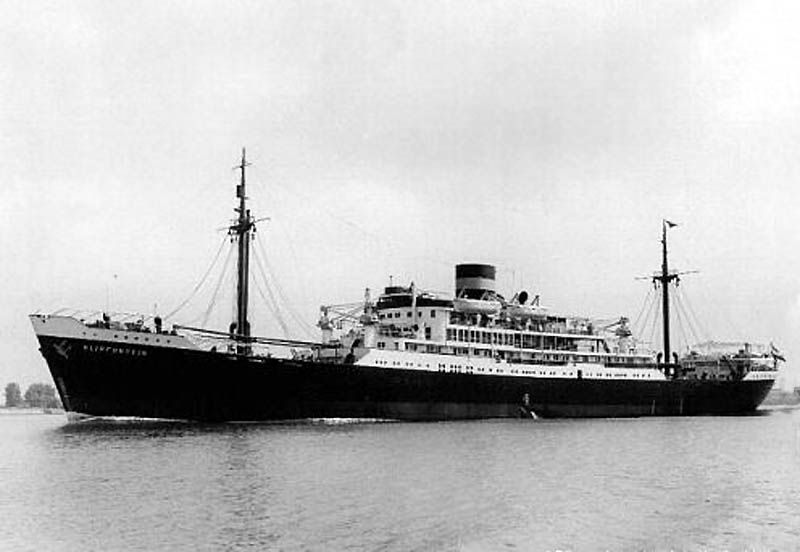
However the Klipfontein’s career from
the
Although there is not a great deal of detail
available of the U.S.S. Klipfontein’s career during WW2, I do know that
she was in
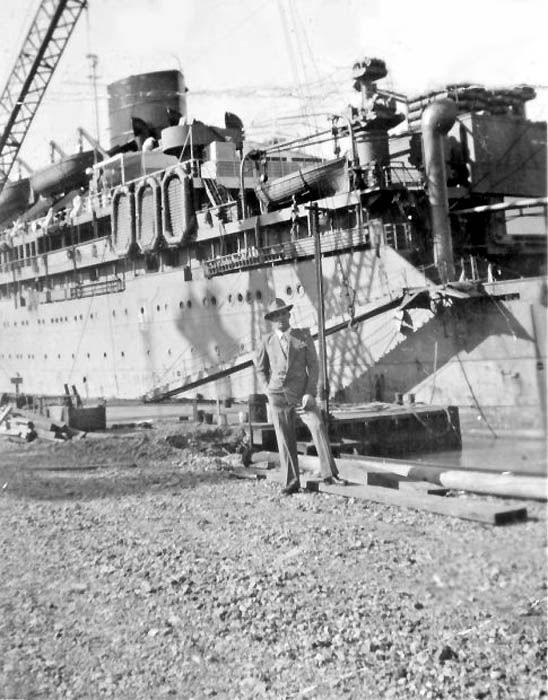
The U.S.S. Klipfontein is seen on in May 1946 in May
1, 1946 at the
The man in the centre of this picture is unknown?
U.S.S. Klipfontein survived the war and she
did so with honours, thus when the she was finally decommissioned in May 1946,
she was sent to the “Craigh Shipyards & Drydocks” at Long Beach California, U.S.A., as seen above,
where her exteriors would be repainted in the traditional V.N.S. company
livery, being a black hull with red boot topping, the black funnel with that
traditional broad orange band on it. In addition some of her interiors would be
restored to passenger conditions, but this required to be completed in the
Upon completion she was returned to the
Netherland’s where she arrived in
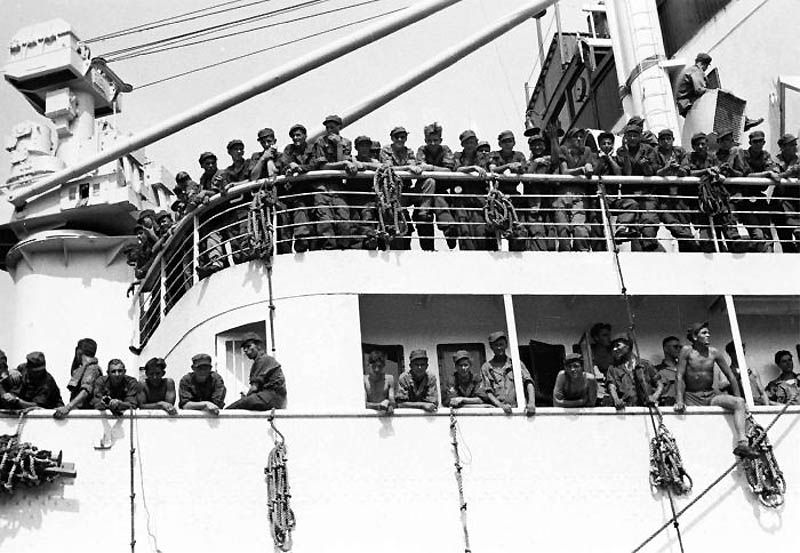
Soldiers
seen arriving in the Dutch East Indies (
M.S. Klipfontein returns to Passenger service:
In October of that year she was returned to
her owners - V.N.S., and she was given a comprehensive internal refit restoring
to her original beautiful state and even better! Upon completion the almost as
new M.S. Klipfontein re-commenced her
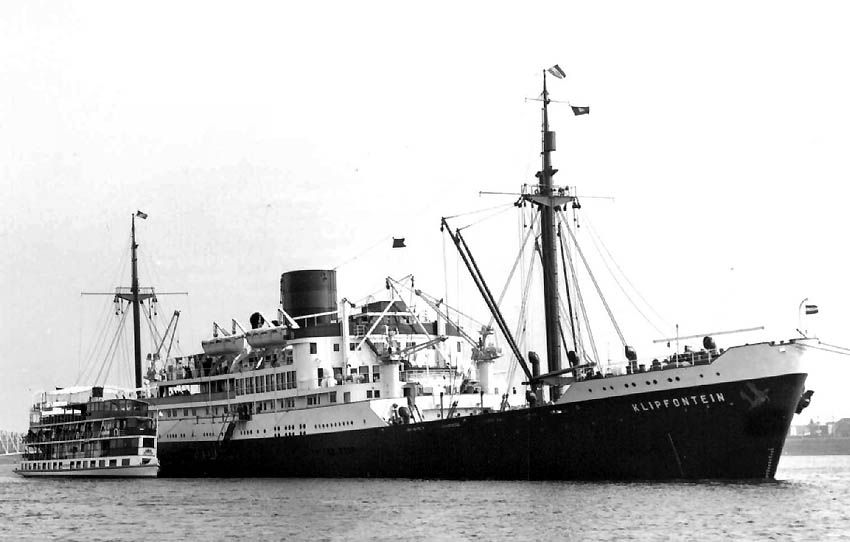
The M.S.
Klipfontein is seen here just after her refit
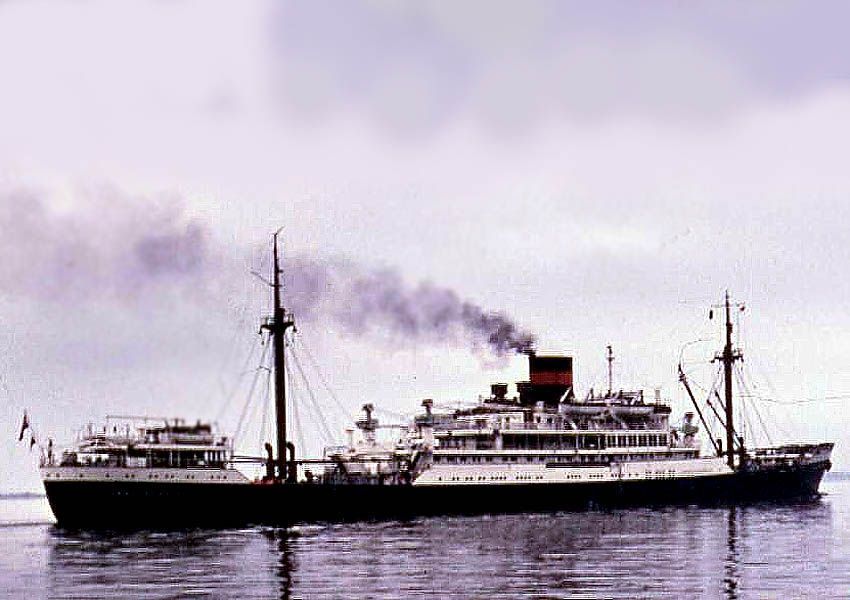
A fine stern view of the post war M.S. Klipfontein
Photograph is by & © Andi Dandi
The Klipfontein continued on her schedule and
she gained a very good following and became a popular ship, this continued for
the next seven years.
Thursday January 8, 19 53:
It was a beautiful calm and balmy January day
at sea, yet it was also the very sad day that the Klipfontein which was under the command of Captain Oosterhuis
suddenly struck an unchartered submerged *reef along
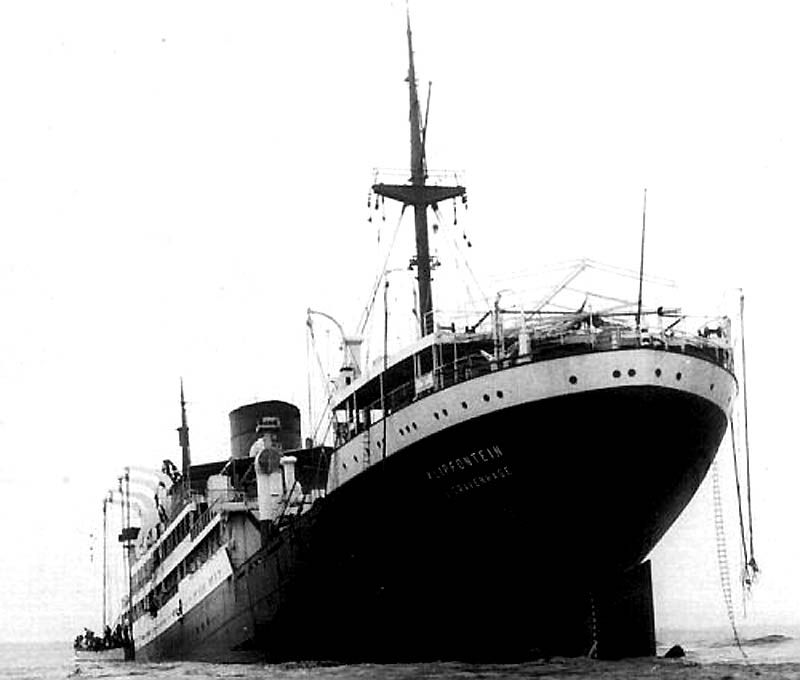
As the
klipfontein is sinking with her bow going down first, we see some of the last
crew members leaving the ship
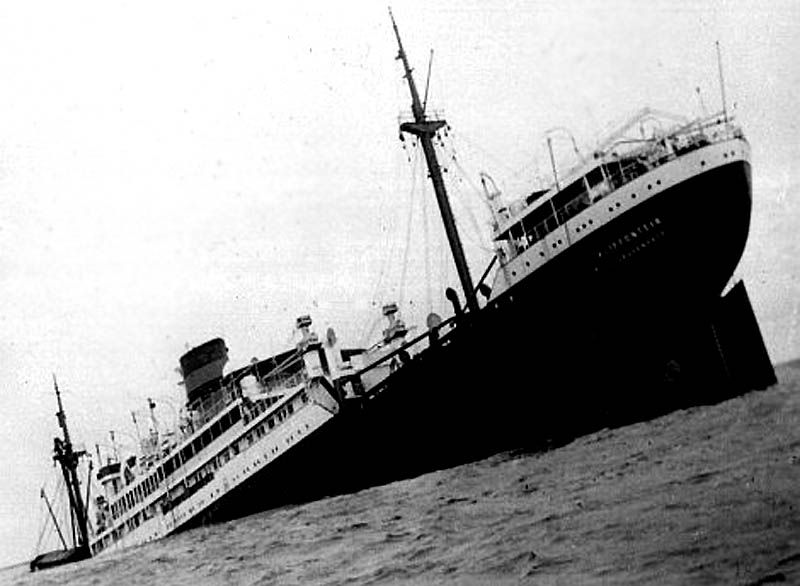
The wonderful M.S. Klipfontein sadly sank around forty-five minutes after having struck the *reef. This was a date that her passengers would never forget, for the beautiful Klipfontein went down on Wednesday January 8, 1953.
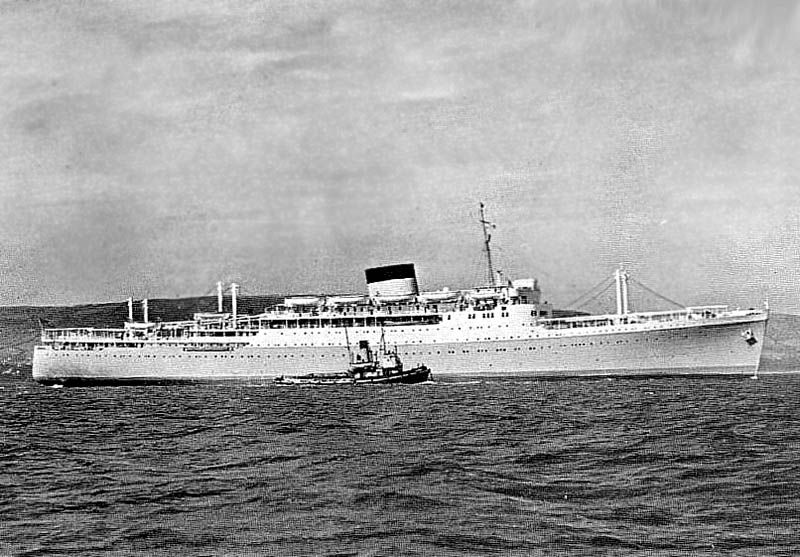
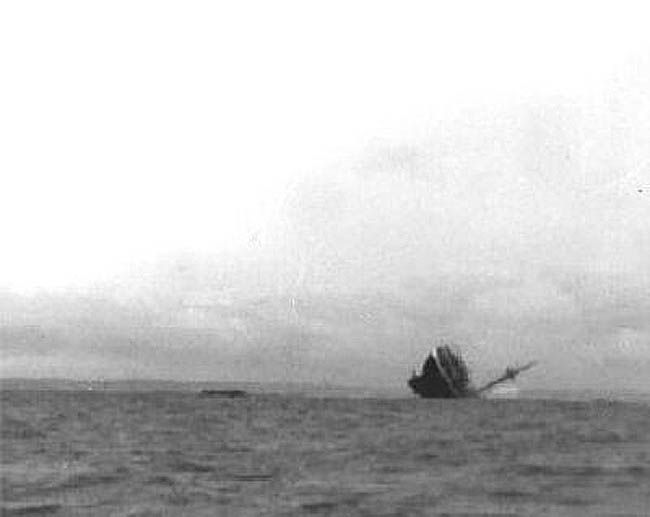
The final
view of the M.S. Klipfontein as she dives to the bottom of the ocean
Two Delightful Memories of the M.S. Klipfontein
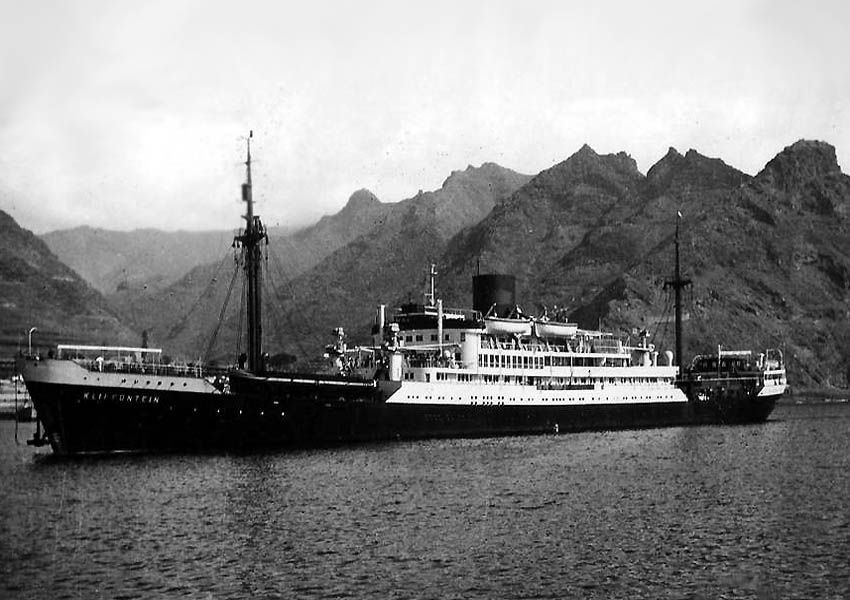
The M.S.
Klipfontein is seen at
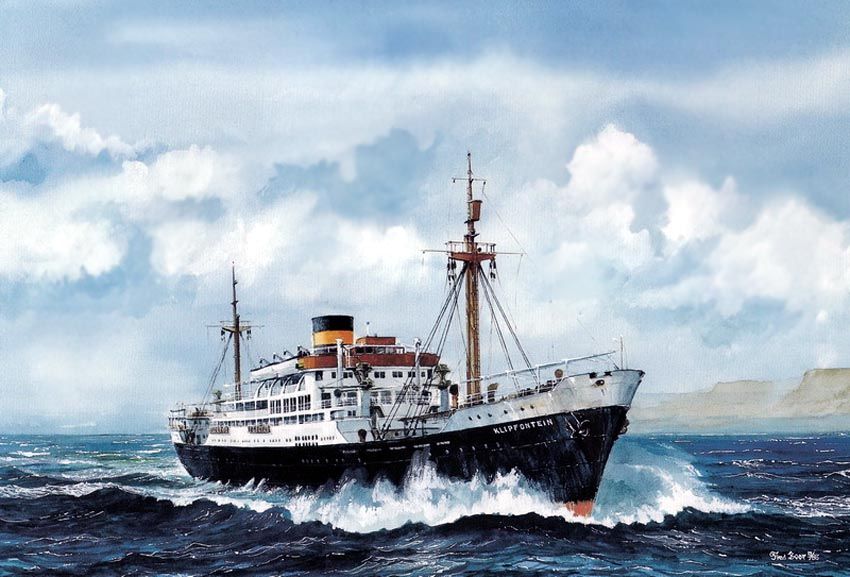
A wonderful painting of the first of the Fontein Trio, which had a tragic end
Painting by &
© Fred Boom the
*******************************
3. Oranjefontein 1940 - 1967
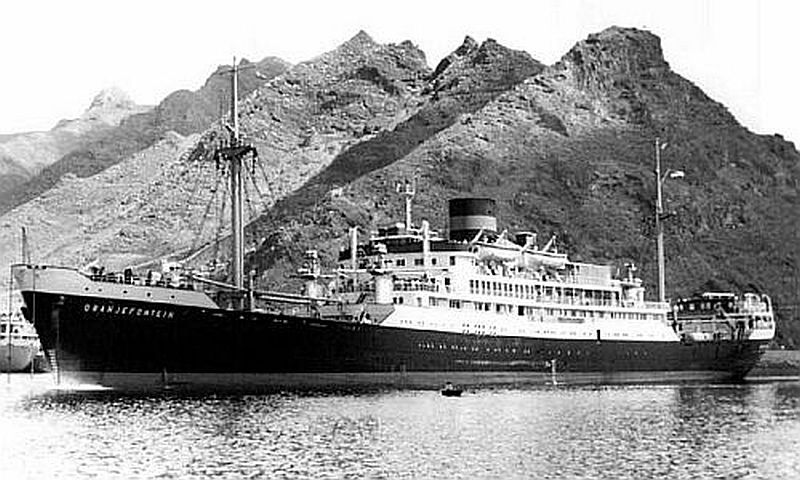
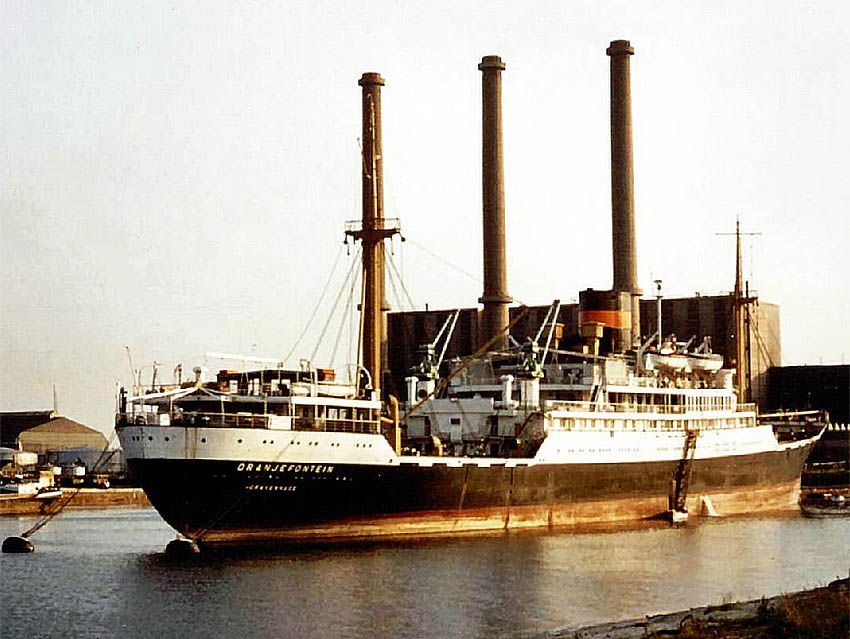
The M.S. Oranjefontein is seen laid up in the Waal Haven (river) early in 1941
On
Whilst in
On July 12, 1945 the Pioneer was finally
returned to the Dutch Government, and they sent her to a
Having returned to Holland from the
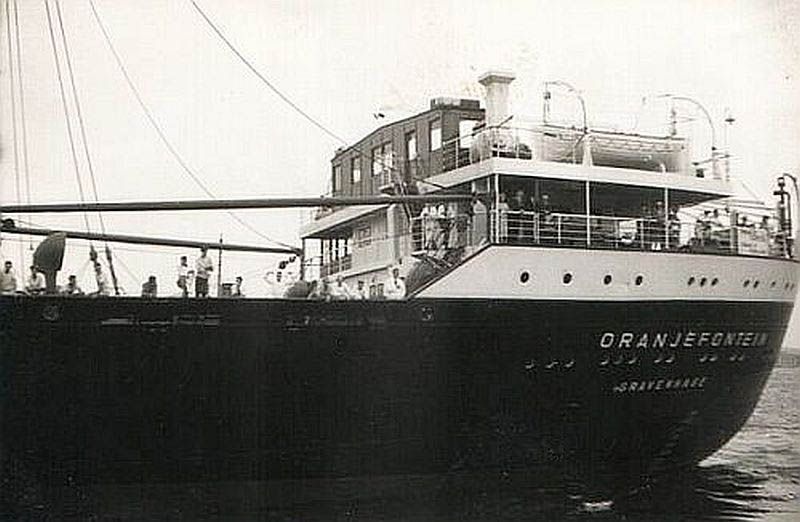
Here is an
unusual shot of her aft section revealing a Tourist Class lounge and decks
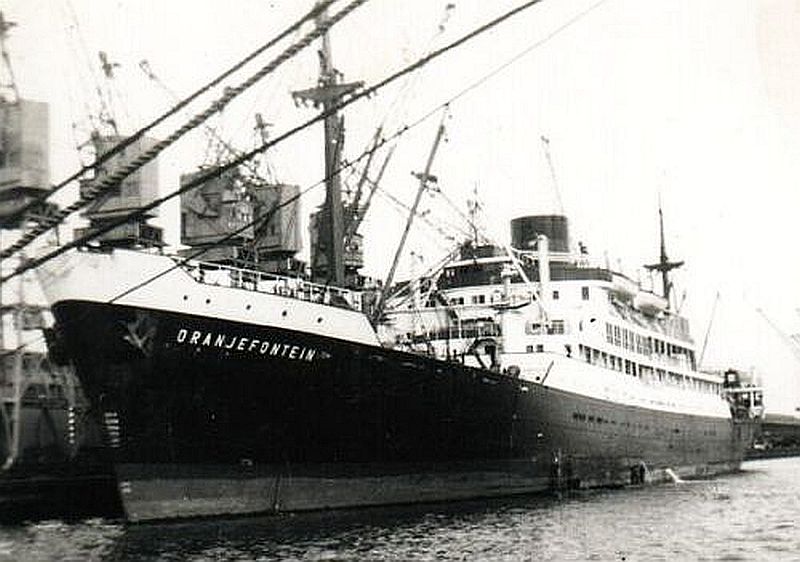
M.S. Oranjefontein is seen whilst in port
Her Final Days:
As with so many ships of her time, slowly passenger loadings commenced to decline, mostly due to cheaper air travel, and also because of dramatic changes with cargo handling with new and modern container systems, and therefore new container ships were being built at a rapid pace, and they were becoming the norm, and the old style Passenger-Cargo ships with their holds, which were slowly going out of date! Therefore, with the drop of incoming revenue, V.N.S., decided to sell the Oranjefontein and she was laid up.
She was sold in 1967, and VNSM sold her to a
Spanish breaker who shortened her name to just “Fontein,” and she was taken under tow to the Bilbao
*******************************
3. Jagersfontein (3) 1940 -
1967
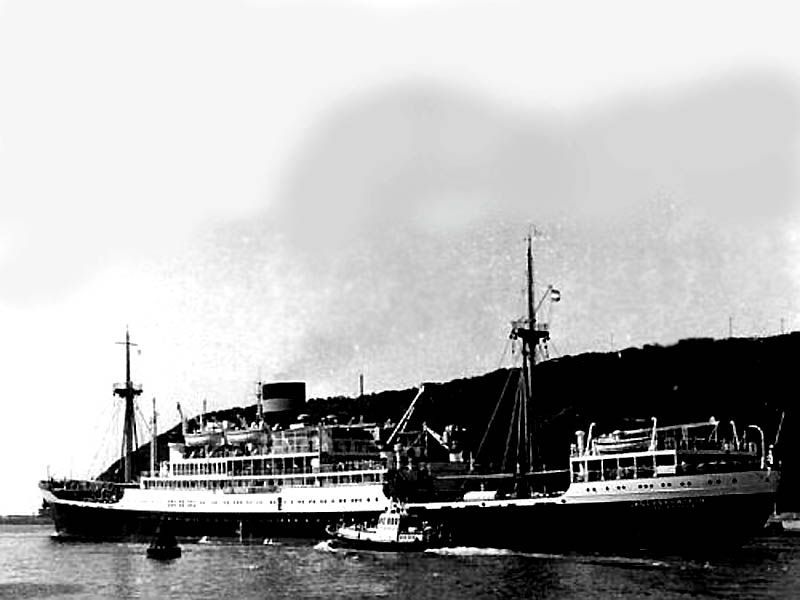
The M.S. Jagersfontein (3) was originally laid
down as the “Reitfontein” in 1939 at the Schichau Shipyards,
With
The revival of A Fontein Ship:
Early in 1947 the sunken M.S. Elandsfontein
was transferred to V.N.S., and she was raised on March 20 and taken to a berth
and laid-up. On August 9, she was temporarily patched up in order for her to be
made as safe as possible for a voyage to
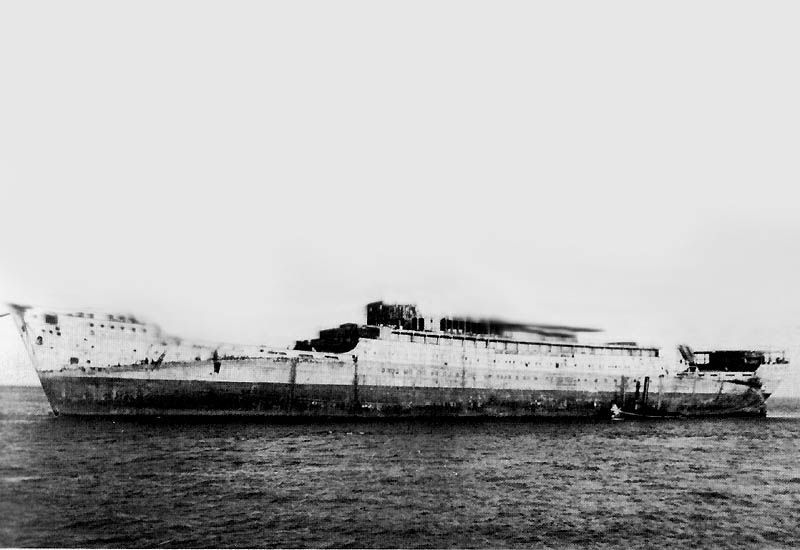
The Elandsfontein is seen under tow in September 1947 bound for
In 1948 the Elandsfontein was renamed the “Jagersfontein”, and finally a good ten years late, in March 1950 the M.S. Jagersfontein (3) was completed and she had become a beautiful V.N.S., liner indeed.
The M.S. Jagersfontein departed on March 11, 1950 for her maiden voyage,
and she commenced a successful career, which continued for a good sixteen years, having become a
much loved ship!
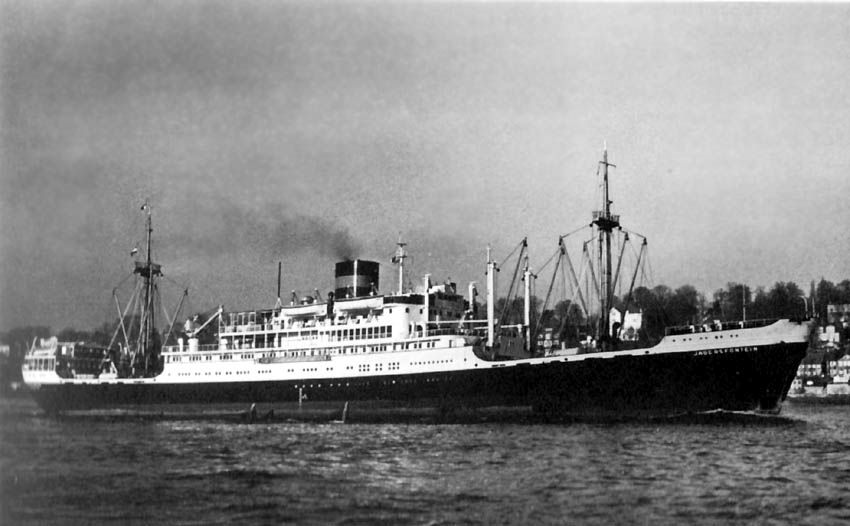
The M.S.
Jagersfontein (3) is seen here during her maiden voyage
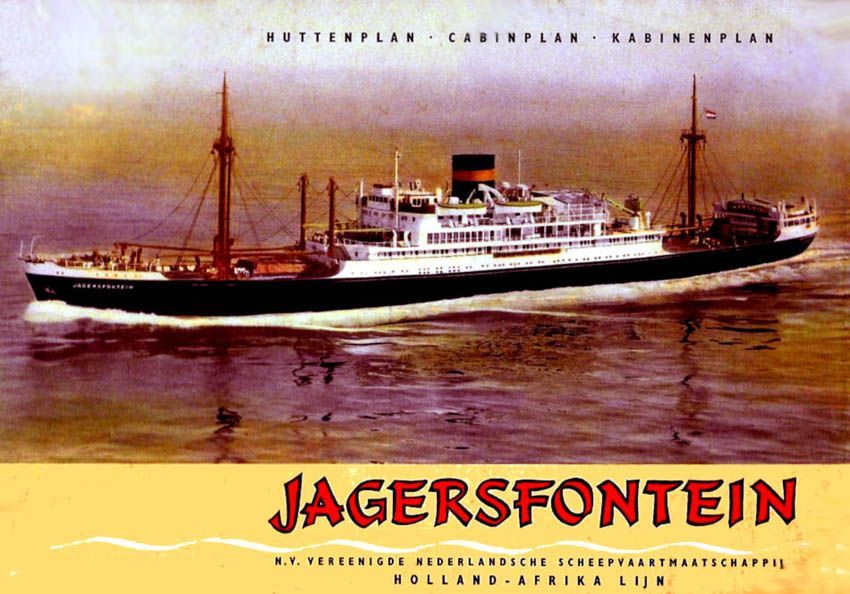
Here we see the cover of a V.N.S., M.S. Jagersfontein Cabin Plan, but sadly to date I do not have the actual plan!
Her final Days:
As with so many ships of her time, passenger loadings were declining, due to cheaper air travel, as well as dramatic changes with cargo handling with new and modern systems, for which container shipping was becoming the norm, and the “old style Cargo holds” were now out of date! With the drop of incoming revenue, V.N.S., decided to sell the Jagersfontein in late 1967.
In November 1967 she was sold to a Embajada Cia Naviera
SA, Piraeus, who renamed her “Devon”, however they rapidly resold
her to a Taiwanese ship breaker for her to be broken up, The M.S. Devon
departed her anchorage, and on December 23, 1967 she arrived at
*******************************
Two Wonderful Memories of the Fontein Trio!

A fine photograph
of the M.S. Oranjefontein at
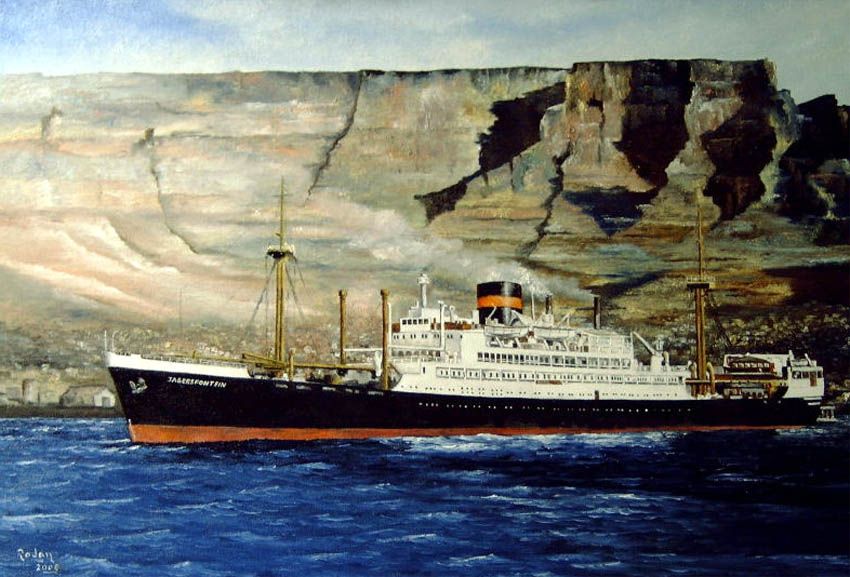
An excellent painting by Fed Boom of M.S. Jagersfontein arriving at Captown
Painting by &
© Fred Boom the
1 - Klipfontein 2 - Jagersfontein & 3 - Oranjefontein - Specifications: Numbers are in the order of Launch dates.
Builder: 1 & 3:
P Smit Jr
. 3:
Schichau Shipyards Danzig
Yards: 1 & 2: 517 - 532.
Launched: 1: March 4, 1939.
. 2: March 21, 1940
. 3: March 30, 1940.
GRT: 10,574 tons.
Length: 528 ft
- 160.9 m.
Engines: 1 & 2:
(B&W) - Burmeister & Wain Diesels 11,800
. 2
& 3: 110
Livery: Black
hull, red boot topping
. Black funnel with a wide
orange band.
*******************************
V.N.S. & Fontein Ships Index:
Page One: The Fontein Trio of Ships history of the M.S. Klipfontein trio of ships
Page Two: Visser Family Voyage to
Page Three: M.S.
Randfontein (2) of 1958
Page Four: Fontein ships Photo Page memorabilia and brochures, etc.
Also Read … V.N.S. Freighters from 4 to 12
passengers.
“Blue Water Liners sailing to the distant shores.
I watched them come, I watched them go and I watched them die.”
Where you
will discover over 1,435 Classic Passenger & Passenger-Cargo Liners!
For interest: Sadly an email
service to ssMaritime is no longer available, due to the author’s old age
and chronic illness as well as being disabled, etc. In the past ssMaritime
received well over 120 emails per day, but
In addition he was the founder of
“Save the Classic Liners Campaign” in 1990.

